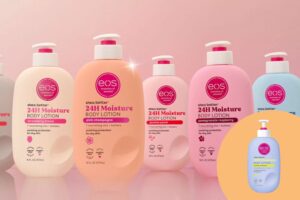How to Start Your Own Shampoo and Conditioner Manufacturing Business
Starting a shampoo and conditioner manufacturing business can be a lucrative venture, given the ever-growing demand for hair care products. To succeed in this competitive industry, it’s crucial to follow the right steps, secure necessary funding, comply with regulatory requirements, and develop effective marketing strategies. Here’s a comprehensive guide to help you get started.
Steps to Launching a Successful Shampoo and Conditioner Manufacturing Company
Starting a successful shampoo and conditioner manufacturing company involves several key steps:
- Market Research: Conduct thorough market research to understand consumer needs, preferences, and market trends. Identify gaps in the market that your products can fill.
- Business Plan: Develop a detailed business plan outlining your business goals, target market, product range, marketing strategies, and financial projections.
- Facility Setup: Choose a suitable location for your manufacturing facility and equip it with the necessary machinery and technology.
- Product Development: Formulate your shampoo and conditioner products, ensuring they meet quality and safety standards.
- Supplier Relationships: Establish relationships with reliable suppliers for raw materials and packaging.
XiangxiangDaily’s Advantage
At XiangxiangDaily, we have successfully navigated the complexities of starting a shampoo and conditioner manufacturing business. Our extensive experience in market research, product development, and supplier relationships has enabled us to create high-quality, innovative hair care products. We offer valuable insights and support to new businesses looking to enter the market.
Initial Investment and Funding Options for Hair Care Product Manufacturers
Launching a shampoo and conditioner manufacturing business requires a significant initial investment. Here are some funding options to consider:
- Personal Savings: Using personal savings is a common way to fund a new business, providing complete control over the venture.
- Bank Loans: Secure a business loan from a bank or financial institution to cover startup costs. Ensure you have a solid business plan to present to lenders.
- Investors: Attract investors who are willing to provide capital in exchange for equity in your business.
- Grants and Subsidies: Explore government grants and subsidies available for small businesses in the manufacturing sector.
Regulatory and Compliance Requirements in Shampoo and Conditioner Manufacturing
Complying with regulatory and compliance requirements is crucial to ensure the safety and legality of your products:
- FDA Regulations: In the U.S., the FDA regulates cosmetic products, including shampoos and conditioners. Ensure your products meet all FDA guidelines.
- Labeling Requirements: Adhere to labeling requirements, including listing ingredients and providing accurate product information.
- Safety Testing: Conduct thorough safety testing to ensure your products are safe for consumer use.
- Environmental Regulations: Comply with environmental regulations related to manufacturing processes and waste disposal.
Marketing Strategies for New Shampoo and Conditioner Brands
Effective marketing strategies are essential to establish your brand and attract customers:
- Brand Positioning: Define your brand’s unique selling proposition (USP) and position it to stand out in the market.
- Digital Marketing: Utilize digital marketing channels, such as social media, email marketing, and search engine optimization (SEO), to reach a wider audience.
- Influencer Partnerships: Partner with influencers in the beauty and hair care industry to promote your products.
- Retail Partnerships: Establish partnerships with retailers to distribute your products both online and in physical stores.
Try Xiangxiang Daily Now!
We Help You Launch New Products, And Continue To Grow. Try Us With 20% Off Your First Order!
Building a Strong Brand Identity in the Hair Care Industry
Building a strong brand identity is crucial for long-term success in the hair care industry:
- Consistent Branding: Ensure consistent branding across all marketing materials, including logos, packaging, and advertisements.
- Customer Engagement: Engage with customers through social media, surveys, and loyalty programs to build a loyal customer base.
- Quality Assurance: Maintain high-quality standards to build trust and credibility with your customers.
- Sustainability: Emphasize sustainable practices in your manufacturing process to appeal to eco-conscious consumers.
Table of Contents
Latest Blog Posts
Check out the latest industry trends and take inspiration from our updated blogs, giving you a fresh insight to help boost your business.






